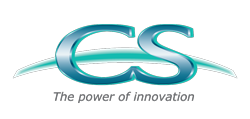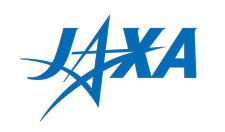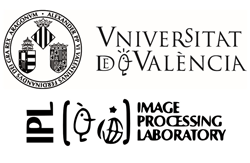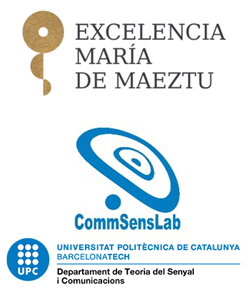Booth 15: ASD Inc.
Website: http://www.asdi.com
ASD Inc., a Malvern Panalytical company, is the global leader in remote sensing and hyperspectral measurement solutions, providing unparalleled ground truthing results. Our rugged, portable FieldSpec® 4 line of spectroradiometers provides the freedom to rapidly collect high-quality spectra in the field. Trusted by top research experts at thousands of universities and research institutions, ASD’s full-range spectrometers are used in more than 70 countries. For more information, please visit us at booth 7 and www.asdi.com.
|
|
|
Booth 03: Beijing PIESAT Information Technology Co., Ltd
Beijing PIESAT Information Technology Co., Ltd is a Chinese high-tech enterprise specializing in research and application of satellite technology (Remote sensing satellite and Navigation satellite). Founded in 2008, PIESAT keeps on providing professional services and applications of domestic satellites as its mission. PIESAT has independently developed software Pixel Information Expert (PIE), offering its clients integrated solution of geospatial information application. PIESAT locates in Beijing and has branches and representative offices in over 20 cities nationwide. PIESAT has more than 800 employees, and has a strong R&D team of which over 80% are geomatics experts.
|
|
|
Booth 16: Canadian Remote Sensing Society
Website: https://crss-sct.ca/
The Canadian Remote Sensing Society - Société Canadienne de Télédéction (CRSS-SCT) is a fully independent, not-for-profit professional society that provides a focal point for leadership and excellence to advance the art, science, technologies and applications of remote sensing and related fields. These activities encompassed government, industry, and educational institutions. We maintain partnerships with other organizations in the remote sensing field, across Canada and internationally. The CRSS-SCT holds an annual symposium and in association with Taylor and Francis, publishes the Canadian Journal of Remote Sensing.
|
|
|
Booth 11: CEOS SEO
Website: http://www.ceos.org
The Committee on Earth Observation Satellites (CEOS) Systems Engineering Office (SEO) provides systems engineering leadership and support to CEOS through technical and management services and the development of tools and products that facilitate systems engineering solutions for societal benefit.
|
|
|
Booth 13: CS Systemes d'Information
Website: https://www.c-s.fr/
Designer, integrator and operator of mission-critical systems, CS is present all along the value chain for its customers. With a turnover of €176M and 1,800 employees, CS is recognized by its major customers thanks to the expertise & commitment of its staff. CS solutions for space, ground or embedded systems and applications can be found at the heart of many civil and military programs. As supplier to the CNES (national space research center) and the European Space Agency (ESA), CS has been involved in most of the major European space programs for over 35 years.
|
|
|
Booth 25,26,27,28: European Space Agency
Website: http://www.esa.int
The European Space Agency is Europe’s gateway to space. Its mission is to shape the development of Europe’s space capability and ensure that investment in space continues to deliver benefits to the citizens of Europe and the world.
ESA is an international organisation with 22 Member States. By coordinating the financial and intellectual resources of its members, it can undertake programmes and activities far beyond the scope of any single European country.
ESA’s job is to draw up the European space programme and carry it through. ESA's programmes are designed to find out more about Earth, its immediate space environment, our Solar System and the Universe, as well as to develop satellite-based technologies and services, and to promote European industries. ESA also works closely with space organisations outside Europe.
|
|
|
|
|
Booth 12: Headwall Photonics 
Website: http://www.headwallphotonics.com
Headwall produces hyperspectral and multispectral imaging solutions for remote sensing applications. Headwall’s all-reflective concentric optical designs feature high spectral and spatial resolution, a wide field of view, high signal-to-noise, and aberration correction. Spectral ranges include visible-near-infrared (VNIR, 400-1000nm), near-infrared (NIR, 900-1700nm), and shortwave-infrared (SWIR, 900-2500nm). Sensors can be mounted aboard UAVs and aircraft, and small-satellite configurations from Headwall are in low-earth-orbit now. Headwall’s VNIR-SWIR sensor covers the 400-2500nm range with co-registered pixels. A new chlorophyll fluorescence sensor targets the 670-780nm VNIR range with very high resolution. Headwall’s integrated solutions include UAV, sensor, GPS/IMU, all software, and LiDAR if needed.
|
|
|
Booth 4: HinaLea Imaging
Website: http://www.TruTags.com
HinaLea Imaging, a division of TruTag Technologies, Inc., is a technology solutions provider that develops complete hyperspectral imaging solutions both directly and on behalf of strategic partners to address specific problems across a variety of industries, including medical diagnostics, precision agriculture and the quality assurance of food and consumer goods. As part of its solution offering, HinaLea developed the world’s first high-resolution, handheld autonomous hyperspectral camera, which was awarded the SPIE Best Camera and Imager Prism Award in 2017.
|
|
|
Booth 14: HySpex
Website: http://www.hyspex.no
HySpex are high-performance and versatile hyperspectral cameras for applications - ranging from UAV/airborne to field, lab and industrial use of imaging spectroscopy.
HySpex operate in the 0.4–2.5µm wavelength range with industry-leading performance, providing scientific-grade quality to our industry, academic, government and defense partners.
HySpex is part of Norsk Elektro Optikk AS (NEO), a privately-owned Norwegian company focused on high-end research within the field of electro-optics.
|
|
|
Booth 24: IGARSS 2019
Hosted by the IEEE Geoscience and Remote Sensing Society, the IGARSS 2019 will be held from Sunday July 28th through Friday August 2nd, 2019 at the Convention Center “PACIFICO Yokohama” in Yokohama, Japan. The conference main theme highlights “Disasters and Environment.”
We will distribute Call for Papers and Call for Sponsors & Exhibitors at our booth as well as introduce the charm of Yokohama and Japan. Please do not miss the opportunity to get latest information about the IGARSS 2019.
|
|
|
Booth 17,18: ImPACT SHIRASAKA Program
ImPACT SHIRASAKA Program develops a lightweight, highly compact SAR satellite system while drastically saving the production cost. Our aimed system also achieves high-performance SAR imaging with 1m spatial resolution. By incorporating high-performance SAR imaging with “high-revisit whole earth monitoring by constellation”, we explore areas in which EO has not been actively used so far and cater to increasingly diverse and sophisticated commercial needs.
The big data, acquired from the unprecedented system, enables us to pursue innovating new applications and pioneering new business in which the high-level information is vital for important decision making all around the world.
|
|
|
Booth 23: Japan Aerospace Exploration Agency (JAXA)
The Japan Aerospace Exploration Agency (JAXA) is a core performance agency to support the Japanese government's overall aerospace development and utilization. JAXA conducts integrated operations from basic research and development, to utilization. JAXA obtains an enormous quantity of data from satellites such as the Greenhouse Gases Observation Satellite (GOSAT), the Global Precipitation Measurement/Dual-frequency Precipitation Radar (GPM/DPR), the Global Change Observation Mission (CGOM-W/C), and the Advanced Land Observation Satellite-2 (ALOS-2). JAXA provides accurate and systematic information that elucidates the earth environment change process and supports our lives by continuous earth observation using satellites.
|
|
|
Booth 21: MDPI AG
Website: http://www.mdpi.com
MDPI is an academic open access publisher of peer-reviewed journals established in 1996 and based in Basel, Switzerland. MDPI publishes over 180 diverse peer-reviewed, scientific, open access, electronic journals, including ISPRS International Journal of Geo-Information (Impact Factor 1.502), Remote Sensing (Impact Factor 3.244), Sensors (Impact Factor 2.677), Sustainability (Impact Factor 1.789), Future Internet and Data. With over 110,000 published papers within the last two decades, MDPI has become a pioneer in academic open access publishing industry. All our content is open access, distributed under a Creative Commons License. MDPI is a member of COPE, STM and OASPA.
|
|
|
Booth 01: The National Center for Airborne Laser Mapping (NCALM) 
Website: http://www.ncalm.org
The National Center for Airborne Laser Mapping (NCALM) is based at the University of Houston and is operated in partnership with the University of California, Berkeley. The center is supported by the National Science Foundation and is associated with the multi-disciplinary Geosensing Systems Engineering & Sciences graduate program at the University of Houston.
NCALM’s mission is to:
• Provide research-quality airborne light detection and ranging (lidar) observations to the scientific community.
• Advance the state of the art in airborne laser mapping.
• Train and educate graduate students with knowledge of airborne mapping to meet the needs of academic institutions, government agencies, and private industry.
Visit our website at www.ncalm.org
|
|
|
Booth 22: Universitat de València
Website: http://ipl.uv.es/
Universitat de València (University of Valencia, UV) is a non-profit public higher education institution with over 45,000 students. The UV occupies a unique position among Spanish universities in the most prestigious academic international rankings, maintaining a leading position in teaching and research. In the Center for World University Rankings 2017 the UV obtained the ninth position in Remote Sensing worldwide, and the second position in Europe. The Image Processing Laboratory (IPL) of the UV has high expertise in image and signal processing, machine learning techniques, and algorithm development for biophysical parameters retrieval based on airborne and spaceborne remote sensors. IPL is active in EO projects for current and future space missions, at national and international levels such as ESA’s 8th Earth Explorer mission FLEX.
|
|
|
Booth 09: Universitat Politècnica de Catalunya (UPC)
CommSensLab - Unidad de Excelencia María de Maeztu Research Lab, is part of the Department of Signal Theory and Communications, Universitat Politecnica de Catalunya, Barcelona, Spain.
CommSensLab main research areas are focused on Antennas and Radio Systems, Free Space Optical Communications, Microwave Systems, NanoSatellites, and Remote Sensing, including LiDAR and Active and Passive Microwaves.
Most research funds come from competitive calls. As a result of an active policy to foster researchers’ careers, CommSensLab recent graduates have three permanent positions at NASA/JPL, several at ESA and DLR, one at NSSC (China), two at EPFL, or occupy decision-making positions in companies.
|
|
|